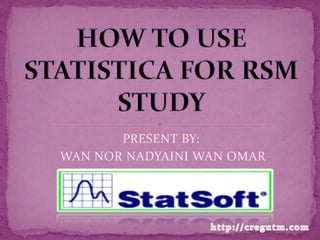The document discusses the steps for conducting a response surface methodology (RSM) experiment using central composite design (CCD). It involves determining independent and dependent variables, selecting an appropriate CCD, conducting the experiment runs according to the design, analyzing the data using statistical methods to develop a mathematical model and check its adequacy, and using the model to optimize responses. Key aspects of RSM and CCD covered include developing the design, analyzing results through ANOVA and regression, and checking model validity.















































